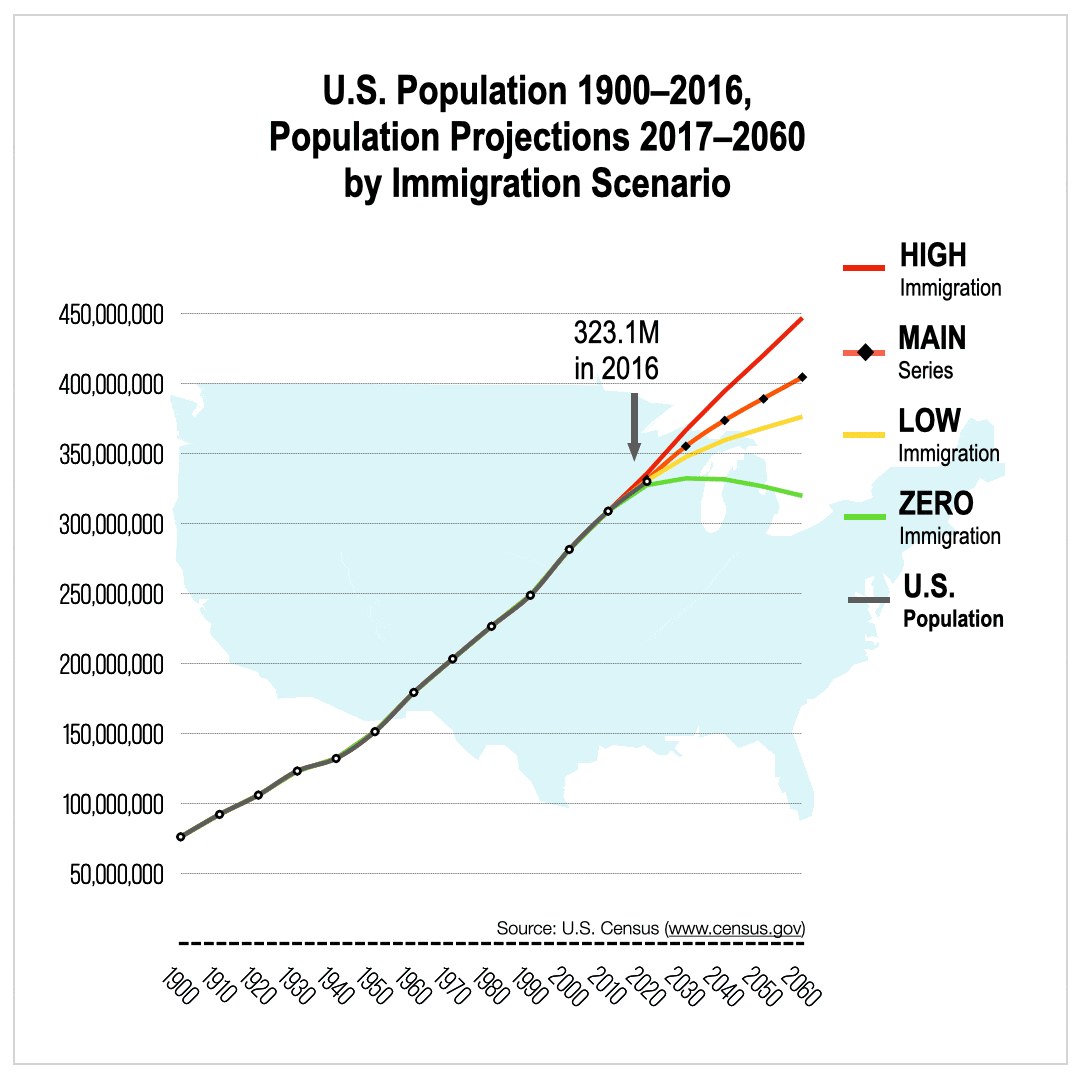Americans are living more densely, on average, than we were 20 years ago, but we’ve paved over the equivalent of more than five Yellowstone National Parks – or roughly eleven-and-a-half million acres during that same period of time. Some of that loss was due to regional differences in land consumption per person; a majority of the loss was a result of the U.S. population growing by nearly 40 million people.
Our individual roles in the destruction of wild habitats and open space go far beyond the house or apartment where we live. And when it comes to total impact, the number of feet matter at least as much as the size of each footprint.

Leon Kolankiewicz, lead author of From Sea to Sprawling Sea: Quantifying the Loss of Open Space in America, explains in a post for The Rewilding Institute:
Even if we could pack everyone into existing towns and cities — which would be politically difficult, given many Americans’ long-standing cultural preferences for single-family homes with yards — we’d still need more farmland, fertilizer, and irrigation water to feed all the extra mouths. We’d still need to dam(n) more watercourses and inundate bottomland hardwood and riparian forests to create reservoirs to supply drinking water. We’d still need more factories, power plants, schools, hospitals, wastewater treatment plants, and solar and wind farms plastered over vital habitats and wildland.”
NumbersUSA’s maps of the destruction of open space overlap considerably with The New York Times’ maps of biodiversity loss and wildfire risk.
The connection is plain to see yet only seldom acknowledged. The New York Times reports on the “environmental nuclear bomb” that is developing in the Southwest:
Now two changes are throwing that [hydrological] system out of balance. One is explosive population growth, diverting more water from those rivers before they reach the lake.
“The other shift is climate change…”
A quarter of a century ago, national environmental groups – including the Natural Resources Defense Council and the Sierra Club – served on President Clinton’s Task Force on Population and Consumption, which recommended Congress regulate immigration (which was and is projected to drive the majority of future U.S. population growth) to allow for population stabilization.
“This is a sensitive issue,” they wrote, “but reducing immigration levels is a necessary part of population stabilization and the drive toward sustainability.” Since then, all of the “Big Green” groups have abandoned the recommendations that they had a hand in making, much to the dismay of many long-time members. Why?
One theory is that by focusing on technical fixes and density, “Big Green” won’t rock the boat with pro-growth corporate funders and foundations. The changing politics around immigration have surely played a role as well. Michael Lind marvels at the relatively rapid shift:
Up until around 2000, libertarians and employer-class Republicans wanted to weaken laws against illegal immigration and expand low-wage legal immigration, against the opposition of organized labor and many African Americans, who for generations have tended to view immigrants of all races as competitors. The Hesburgh Commission on immigration reform, appointed by President Jimmy Carter, and the Jordan Commission, appointed by President Bill Clinton and led by Texas Rep. Barbara Jordan, the pioneering civil rights leader who was left-liberal, Black, and lesbian, both proposed cracking down on illegal immigration–by requiring a national ID card, punishing employers of illegal immigrants, and cutting back on low-skilled, low-wage legal immigrants. As late as 2006, then-Sens. Barack Obama and Hillary Clinton both voted for 200 miles of border fencing in the Southwest.
“Then, virtually overnight, the progressive movement flipped and adopted the former talking points of the Chamber of Commerce cheap-labor lobby.”
Whatever the explanation, climate change has overtaken sprawl as a focal point of environmental activism. But Congress’ immigration-driven population policies lurk behind both concerns. The demographer and former Director of the U.N.’s population division, Joseph Chamie considers an open-borders world where the population of the United States would quickly double (as many propose), with serious tradeoffs:
Large numbers of people would be migrating to countries with high levels of greenhouse gas emissions per capita. For example, while the world average of tons of CO2 equivalent per person is about 6, the level in the United States is about three times as large at 19….The migration to the high consumption destination countries would lead to increased biodiversity loss, pollution, and congestion.”
Chamie warns that by “contributing to climate and environmental disintegration, the continued growth of the U.S. population constitutes a serious threat to the security and wellbeing not only of the 333 million people residing in the country today but also to future generations.”
“We must admit the relentless pursuit of population growth is simply not sustainable,” Chamie says. Twenty five years after the Task Force issued its recommendations, we don’t appear close to confronting that unsettling reality.
Julie Axelrod, a lawyer who has sued the government for failure to comply with the National Environmental Policy Act (NEPA) observes that when the government or private entity is “building a building, you’re going to consider whether that causes population growth, but when you’re letting in a million people, you’re not going to consider whether or not that might cause population growth?”
Whether one aspires to a more dense, urbanized lifestyle or not, Americans’ slow – if indecisive – drift towards density does tend to lower our per-capita footprints and mitigate sprawl. But Kolankiewicz’s findings demonstrate that it won’t be enough as “sprawl, associated habitat loss, and fewer of our wild brethren are an inevitable consequence of human population growth; it’s what ecologists call competitive displacement.”

JEREMY BECK is a V.P., Deputy Director for NumbersUSA
Take Action
Your voice counts! Let your Member of Congress know where you stand on immigration issues through the Action Board. Not a NumbersUSA member? Sign up here to get started.
Donate Today!
NumbersUSA is a non-profit, non-partisan organization that relies on your donations to works toward sensible immigration policies. NumbersUSA Education & Research Foundation is recognized by America's Best Charities as one of the top 3% of well-run charities.
Immigration Grade Cards
NumbersUSA provides the only comprehensive immigration grade cards. See how your member of Congress’ rates and find grades going back to the 104th Congress (1995-97).